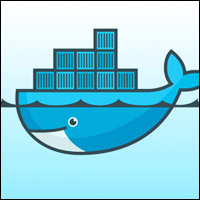
There is little question regarding the prevalence and significance of open source software in enterprise IT, but one of the best places to more deeply examine open source software and how it fits into today’s enterprise IT landscape is the OpenStack cloud software and project.
It has come to represent the primary open-source cloud in the market, has grown its developer and vendor support, and has made its way into enterprise conversation and consideration alongside much larger, better-established rivals such as Amazon and VMware.
OpenStack is fairly consistent with the pervasiveness of open-source software in today’s market, according to “The OpenStack Pulse 2015,” a new report from 451 Research. It also aligns with top enterprise IT trends — such as cloud computing, faster and more efficient management infrastructure, and DevOps, big data, and microservices.
OpenStack is helped along by its extensibility, which translates to a growing number of use cases in mobile devices and back-end management, and Internet of Things applications and initiatives.
Container Crossover and Competition
One of the most interesting areas of open source intersection is Docker and containers, where OpenStack is both bolstered and threatened by the movement. At this time, it appears that Docker and application containers are mostly complementary to OpenStack.
Some of this synergy is seen in Magnum, an API service for OpenStack that offers container orchestration engines such as Docker and Kubernetes via first-class resource availability in OpenStack.
Magnum leverages the Heat orchestration service to manage OpenStack images that contain Docker or Kubernetes, allowing the images to run in either virtual machines or on bare metal. This is another key area where OpenStack, which is built around and oriented to VMs, may emerge as an ideal platform to support both containers and VMs.
Additional work with OpenStack on containers includes a partnership from Mirantis and CoreOS to integrate the Mirantis OpenStack distribution with the CoreOS Tectonic container platform. The companies also are working together to integrate Kubernetes with the OpenStack application catalog, Murano, to make using Kubernetes on OpenStack easier.
While containers themselves may be mostly complementary to OpenStack, the scheduling, management and orchestration of containers is another matter. Over time, lightweight, hybrid, and container-specific operating systems and vendors such as CoreOS, Mesosphere, and RancherOS may present more of a threat to OpenStack as they extend their capabilities and integrations.
However, it likely will be similar to the mixed-use expected with containers and VMs when it comes to container management, where OpenStack backers are bolstering the cloud software’s ability to run containers either inside VMs or on bare metal.
Just Another Hybrid Cloud Piece
OpenStack is increasingly involved in hybrid cloud deployments, which are also evolving. Just as Linux transformed from a novelty to an enterprise mainstay, companies are viewing and adopting OpenStack as just another cloud, among many other options.
New hybrid and multi-cloud scenarios are beginning to emerge. They go beyond public-private implementations that blend the best of both worlds (elasticity, availability, scalability of public cloud and control, security, and compliance of private cloud).
For example, some users are consolidating from many private clouds into fewer or a single private cloud. Another use case is the expansion of public cloud use beyond one provider to take advantage of geographic, technical, or other advantages. This mix of cloud infrastructures is contributing to a more diverse landscape in which OpenStack is among many options for users and customers.
As it matures, OpenStack’s parallel to Linux is clearer. Linux emerged as a somewhat exotic, open-source challenger to the proprietary operating systems of the time 20 years ago. Today, it is credible, well accepted and well supported, and represents one of the most popular and widely used operating systems in the industry.
However, Linux still exists in a market of mixed use. It’s likely that OpenStack will be subject to the same effect, becoming a viable option among a number of cloud infrastructures.
OpenStack M&A Keeps Coming
OpenStack — which continues to be an example of a more modern, end user-driven open source community — has consistently been a source of M&A activity, particularly since it has drawn the involvement of both startups and established players.
When we consider the historic and most recent deals in OpenStack, a clear pattern emerges. Larger vendors such as Cisco, EMC, IBM, and Red Hat have continued to play acquirers to mostly pure-play and startup OpenStack companies, including Metacloud, Cloudscaling, Blue Box, and eNovance, respectively. Cisco also recently acquired Piston Cloud in a deal that left Mirantis among the only original OpenStack startups still independent.
Though we’ve seen many of the original OpenStack pure-play vendors already acquired in M&A, a new wave of project- and subproject-specific vendors in storage, networking, and other areas are now potential acquisition targets.
An increase in M&A activity and investment in privately held OpenStack players has brought credibility to this open-source community. While consolidation has resulted in a larger presence of established vendors and fewer OpenStack pure plays in the market, this next wave of OpenStack-specific startups is likely to keep things interesting.


















































With Ubuntu’s popularity for OpenStack deployments including current Production environments (11/2014 OpenStack User Survey – superuser.openstack.org/articles/openstack-user-survey-insights-november-2014) I think it is useful to see what Canonical is doing for a total architectural solution approach.
LXD/LXC is designed to provide remote/local LXC container orchestration/management with its REST api.
Combine that with the LXD driver (nclxd) Canonical created for OpenStack Neutron to enable OpenStack use of LXC system (OS vs Application) containers by Nova. (github.com/lxc/nova-compute-lxd)
Next in line is the current state of LXC (linuxcontainers.org).
Since its 1.x release in 2014 now supports templates for most popular Linux Distro’s.
Also supported are unprivileged or privileged containers, nested containers, support of apparmor/selinux/seccomp.
For the best background on LXC capabilities refer to Stephane Graber’s 10 part Blog post on LXC 1.x – stgraber.org/2013/12/20/lxc-1-0-blog-post-series/
Lastly, LXC will be a very familiar environment for anyone that already works with VMs under KVM, VirtualBox etc.
Why, simply because the LXC container will appear just like a full linux environment where you can install/configure any applications you want but scale much more than a HW virtualization environment.
That can make porting an existing application from running on a HW VM to an LXC container of the same Linux OS much simpler with quite likely little or no changes required to the application.
LXC can scale 10-15X+ HW virtualization given identical workloads so that can offer a larger ROI on the server investments.
To try some of the above I found:
github.com/Ubuntu-Solutions-Engineering/openstack-installer